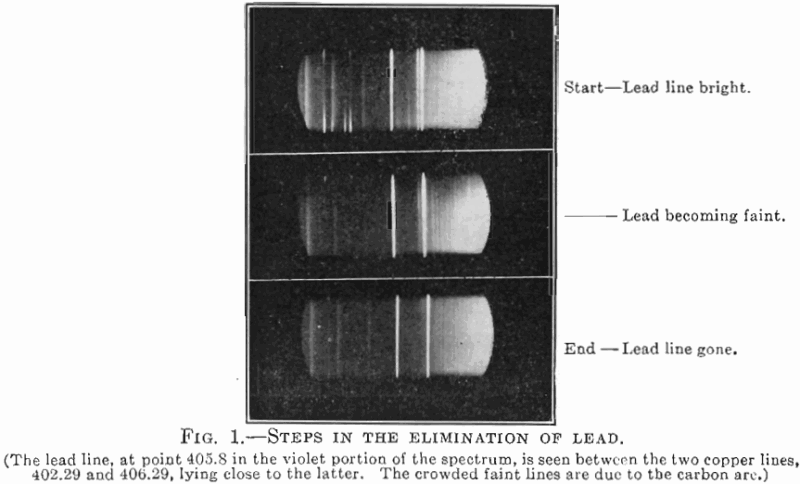Spectroscopic Determination of Lead in Copper

In a previous article preliminary experiments were described, indicating the possibilities of a quantitative spectroscopic method for the determination of small amounts of lead in copper, which would be accurate and rapid, and could be carried out in the refining plant by one not skilled in chemical analysis. The present paper deals with the development […]
How Base Metals Affects Gold Bullion Assaying

Having shown the difficulty of assaying so-called cyanide bullion and the extreme variations often found in the results, an investigation was undertaken to discover, if possible, the causes of these variations by a series of tests upon the specific action of various metals during cupellation. What is the Effect of Zinc o Gold Assay In […]
Compressing Sample Powder to Briquet
The mold used in producing the raw briquet is shown in Fig. 15. This consists of two halves of hardened tool steel, held together by strong bolts. Into each half is milled a polished V-shaped groove, so that when the two parts are bolted together a square chamber is produced. Into one end of this […]
Drill Holes Assay Result Interpretation

In the exploration of a copper deposit by drilling, obvious advantages are to be gained from a distinction between primary and secondary ore. Perhaps the chief of these is the aid which such a distinction renders in determining where a given hole should stop. The copper assay, often a sufficient guide, cannot always be exclusively […]
Cupellation Losses & Assaying Error

Cupellation is well known to be one of the most effective methods of separating silver and gold from base metals and other impurities, as well as one of the most accurate means for their estimation. In the latter application it consists in absorbing in some porous medium the fused lead, oxide formed by the oxidation […]
Arsenic and Antimony Assay for Electrolytic Copper

As the electrolytic plant of this company operates at a current density of approximately 35 to 40 amperes per square foot when running up to capacity, the arsenic and antimony content of the anodes delivered to the plant is of considerable importance as bearing on the purity of the refined cathodes turned out. Owing to […]
Gay-Lussac Assay Method of Silver Determination

This old and well-known method of determining silver is, in bullion work, so far superior to the furnace-assay that it is looked upon with reverential awe by many, if not by most, users, and its ease of execution, with proper equipment, commends it highly where much commercial bullion work on silver is required. The method […]
Assay Determination of Platinum in Ore & Gold Bullion

By the old method of determining platinum in ores and bullion, the silver-alloy first obtained in the regular course of assay is parted in strong sulphuric acid and the residual metal weighed. This is re-alloyed with silver by a second cupellation and parted in nitric acid, the residual metal being again weighed. Any difference shown […]
Assay of Gold and Silver by the Iron-Nail Method

The iron-nail method of assaying has been used for a number of years, but has not met with the approval of all assayers. The method possesses advantages which may be given as follows: (1) no preliminary treatment is required; (2) a lead button of proper size can be obtained; (3) it is economical. On the […]
Assaying for Silver and Gold
From time immemorial the methods of assaying any materials for silver and gold were in reality nothing but laboratory smelting methods. The writer arrived in Butte, Mont., he found that these metals, contained in copper bullion, were still determined by the all-fire assay, both in the same charge. There seems to be no record as […]
